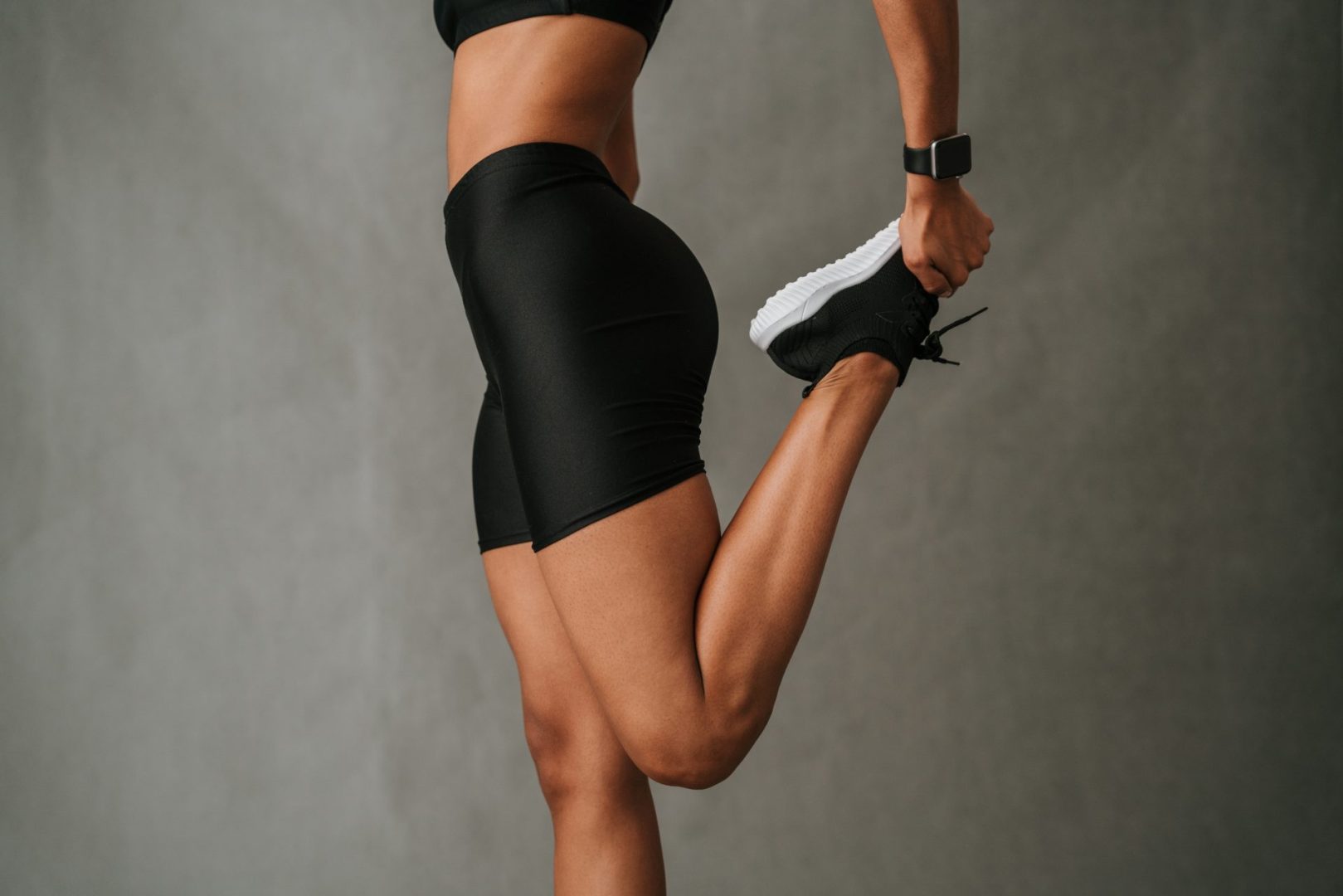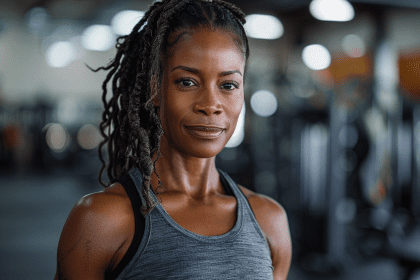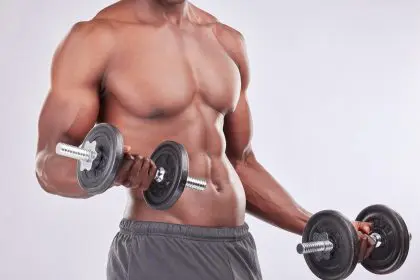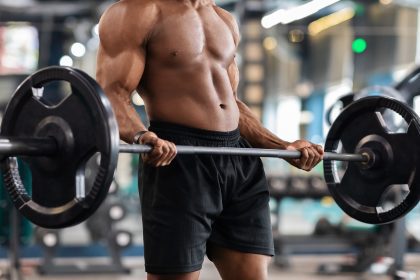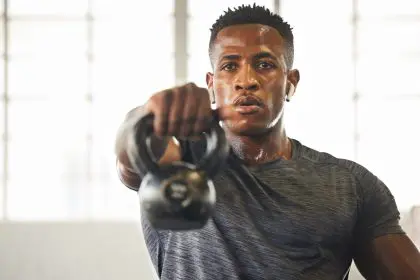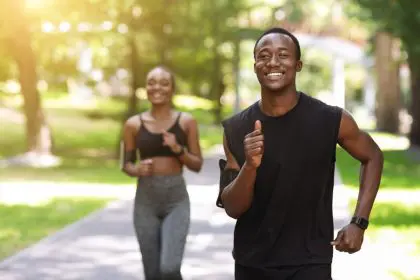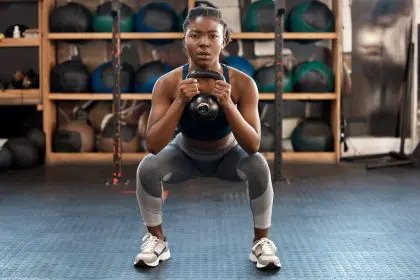Weak thigh muscles affect millions of people, creating challenges with daily activities like climbing stairs, getting up from chairs, or maintaining balance during movement. The quadriceps and hamstrings work together as powerhouse muscle groups that support knee stability, hip function, and overall lower body strength. When these muscles become weak or imbalanced, the ripple effects impact everything from athletic performance to basic mobility.
The thigh contains some of the body’s largest muscle groups, making targeted strengthening both highly effective and relatively straightforward with the right approach. These eight exercises address different aspects of thigh weakness, from basic activation patterns to advanced strength-building movements that create lasting muscle development.
1. Wall sits build foundational endurance
Wall sits create an isometric challenge that activates the entire quadriceps group while improving muscular endurance. This exercise requires no equipment and allows precise control over intensity levels. Position your back against a wall with feet shoulder-width apart, sliding down until thighs reach parallel to the floor. The sustained muscle contraction forces adaptation in both slow-twitch and fast-twitch muscle fibers.
Starting with 20-30 second holds allows beginners to build base strength without overwhelming weak muscles. Advanced practitioners can extend holds to 60-90 seconds or add single-leg variations. The exercise strengthens the vastus lateralis, vastus medialis, vastus intermedius, and rectus femoris while improving hip flexor flexibility.
Wall sits also enhance proprioception and joint awareness, crucial elements for people recovering from injury or dealing with chronic weakness. The controlled environment reduces injury risk while maximizing muscle recruitment patterns that translate to functional movement.
2. Squats activate multiple muscle groups simultaneously
Squats remain the gold standard for comprehensive thigh development because they engage quadriceps, hamstrings, and glutes in coordinated movement patterns. This compound exercise mimics natural movement mechanics while allowing progressive overload through various modifications.
Bodyweight squats provide an excellent starting point for weak thigh muscles. Focus on controlled descent and powerful upward drive, maintaining proper knee tracking and hip hinge mechanics. The eccentric portion of the movement creates microscopic muscle damage that stimulates strength gains during recovery.
Goblet squats add resistance while improving squat mechanics through counterbalance. Hold a dumbbell or kettlebell at chest level, allowing the weight to guide proper torso positioning. This variation enhances quadriceps activation while teaching optimal movement patterns that prevent injury.
Box squats eliminate guesswork about depth while building confidence in the movement pattern. Sitting back onto a box or bench ensures consistent range of motion while reducing fear of falling backward. This modification particularly benefits individuals with balance issues or severe muscle weakness.
3. Lunges develop unilateral strength and stability
Lunges address muscle imbalances by working each leg independently while challenging stability and coordination. This exercise reveals strength differences between legs while correcting asymmetries that contribute to injury risk and movement dysfunction.
Forward lunges emphasize quadriceps development through the lengthened position during descent. Step forward into a split stance, lowering the back knee toward the ground while maintaining upright torso positioning. The front leg quadriceps work eccentrically during descent and concentrically during return to standing.
Reverse lunges reduce knee stress while maintaining quadriceps activation. Step backward into the lunge position, focusing on controlled movement and proper knee alignment. This variation suits individuals with knee sensitivity while still providing effective muscle stimulation.
Lateral lunges target often-neglected frontal plane movement patterns while strengthening the inner and outer thigh muscles. Step sideways into a wide stance, sitting back into one hip while keeping the opposite leg straight. This movement improves hip mobility while building functional strength for daily activities.
4. Step-ups translate to real-world movements
Step-ups directly mirror stair climbing mechanics while providing scalable resistance training for weak thigh muscles. This functional exercise improves single-leg strength, balance, and coordination while building confidence in daily movement patterns.
Use a sturdy box, bench, or stair step that allows the thigh to reach parallel when the foot is placed on the surface. Step up with one leg, driving through the heel to lift the body weight. Control the descent without pushing off the ground leg, maintaining tension in the working muscles throughout the entire range of motion.
Weighted step-ups increase difficulty as strength improves. Hold dumbbells at your sides or a barbell across your shoulders to add resistance. The additional load challenges the quadriceps and hamstrings while improving bone density through progressive overload.
Lateral step-ups target different muscle activation patterns while improving frontal plane stability. Step sideways onto the platform, focusing on controlled movement and proper alignment. This variation addresses muscle imbalances while building strength in movement patterns often neglected in traditional training.
5. Single-leg glute bridges strengthen posterior chain
Single-leg glute bridges primarily target the hamstrings and glutes while improving hip stability and core activation. This exercise addresses posterior chain weakness that often accompanies quadriceps-dominant movement patterns.
Lie on your back with knees bent and feet flat on the floor. Extend one leg straight while lifting the hips by driving through the planted heel. Focus on squeezing the glutes at the top position while maintaining level hips throughout the movement.
The exercise strengthens the biceps femoris, semitendinosus, and semimembranosus muscles that comprise the hamstring group. Improved hamstring strength creates better balance with quadriceps function while reducing injury risk during athletic activities.
Progressive variations include elevated feet positions or adding resistance bands around the thighs. These modifications increase muscle activation while maintaining proper movement mechanics for continued strength development.
6. Leg extensions isolate quadriceps muscles
Leg extensions provide isolated quadriceps strengthening when performed with proper technique and appropriate resistance. This exercise allows targeted muscle activation without the complexity of compound movements, making it ideal for rehabilitation or specific weakness patterns.
Seated leg extensions using resistance bands or machines focus entirely on quadriceps contraction. The isolation nature allows maximum muscle recruitment while minimizing compensation patterns that mask underlying weakness.
Control both the lifting and lowering phases of the movement to maximize muscle fiber recruitment. The eccentric portion provides significant strength-building stimulus while improving muscle control and coordination.
Single-leg variations expose strength imbalances while ensuring each leg develops independently. This approach prevents the stronger leg from compensating for weakness in the opposite limb.
7. Hamstring curls balance muscle development
Hamstring curls provide targeted posterior thigh strengthening to balance quadriceps-dominant training programs. Strong hamstrings protect the knee joint while improving overall thigh muscle function and reducing injury risk.
Prone hamstring curls using resistance bands or machines isolate the hamstring muscles through their primary function of knee flexion. Focus on controlled movement with emphasis on the muscle contraction rather than speed or momentum.
Standing hamstring curls using resistance bands offer a functional alternative that challenges balance while strengthening the posterior thigh muscles. This variation mimics natural movement patterns while providing effective muscle stimulation.
Single-leg hamstring curls ensure balanced development between legs while revealing strength discrepancies that require attention. The unilateral focus prevents compensation patterns while maximizing muscle activation.
8. Bulgarian split squats challenge stability and strength
Bulgarian split squats combine the benefits of lunges with increased stability demands, creating a challenging exercise for advanced thigh strengthening. This movement requires significant quad and glute activation while improving balance and coordination.
Position the rear foot on an elevated surface with the front leg supporting body weight. Lower into a lunge position by bending the front knee while maintaining upright torso positioning. The elevated rear foot creates instability that forces greater muscle activation in the working leg.
The exercise particularly targets the quadriceps through extended range of motion while challenging the glutes and hamstrings for stability. The single-leg nature exposes imbalances while building functional strength patterns.
Progressive variations include adding weight or increasing the height of the rear foot elevation. These modifications increase difficulty while maintaining proper movement mechanics for continued strength development.
Consistency in exercise selection and progression creates lasting improvements in thigh muscle strength. These eight movements address different aspects of muscle weakness while providing scalable challenges for all fitness levels. Regular practice combined with proper progression leads to stronger, more functional thigh muscles that support improved quality of life and athletic performance.

